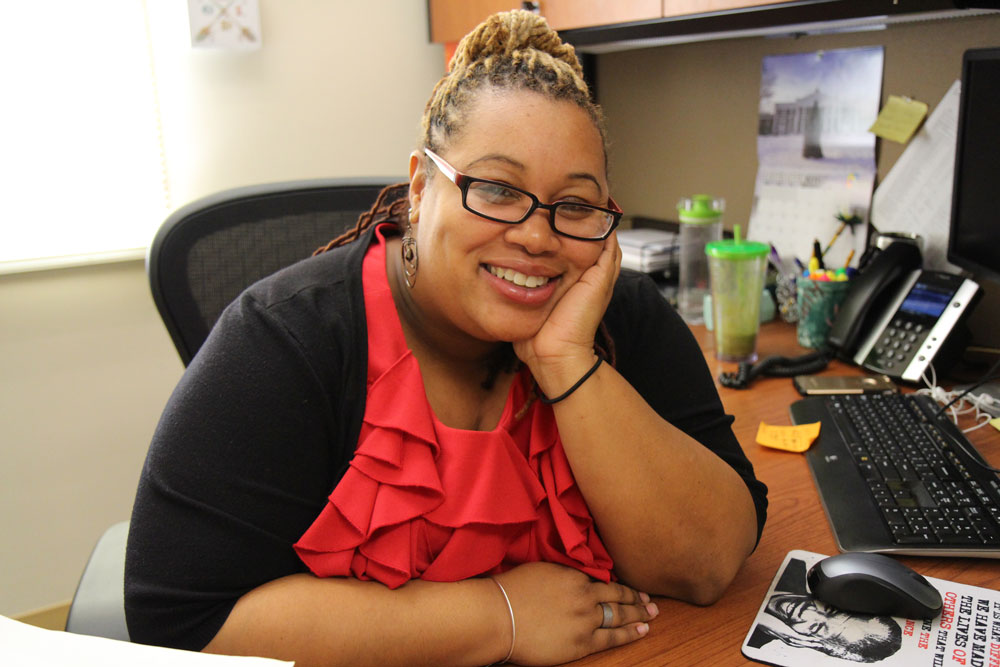Five questions with Katrina Debnam

-
Given your work with adolescents, you offer an important perspective to nurses and teachers in particular. How did your professional career begin?
What I didn’t realize when I started out is that psychology has a very individualized focus while public health has a broader focus. I’d seen things in my own community that I wanted to change and found myself too wanting to DO something, not just study people and things.
-
What then?
After [earning a degree in psychology, doing an internship funded by NIH, completing a masters in public health at UNC Chapel Hill and] a brief stint at the State Department of Health, I began work at the Johns Hopkins Center for the Prevention of Youth Violence at where I worked on studies that brought me into schools, doing teacher training, evaluation, data analysis and observation… The University of Maryland doctoral program allowed me to continue my work related to spirituality, wellness, and relationships and how, especially adolescent girls viewed healthy and unhealthy relationships.
-
Why do adolescents interest you so much?
I have a lot of friends who say, ‘College was my glory day,’ but I feel as though my high school days were my glory days. There was a lot going on around me, so many thoughts and feelings I remember about working, school, friends, family, and relationships. I truly believe that if we can help people a little earlier, while they’re still young and full of hope, and can make changes that will carry them into adulthood – that’s really where we get the biggest bang for our buck.
I also think this is a group to which we need to listen more … adolescents are challenging, insightful, thoughtful, and if we work with them right, they keep a positive trajectory.
-
What are you working on now?
There’s an app that’s being used by college-aged students focused on safety planning surrounding dating violence -- originally developed by the One Love Foundation and Nancy Glass at Johns Hopkins School of Nursing -- that I want to take further to focus on the issues adolescents face. To do that, I’ll meet with young people in focus groups to go through Glass’s original app to see what they see is relevant, and what’s missing. That’s the great thing about adolescents; they’ll tell you. They’ll be blunt.
[An app is a useful intervention for this group because] sometimes, when you’re worried about others’ judgement, it becomes easier to tell an inanimate object – the phone, the device – about a problem. As a first point of contact or an assessment, I think an app like this would make [the abuse] real.
-
Do you think pediatricians and nurse practitioners who see adolescent patients screen them for violence?
I would love that. Kids today are in emotional and sometimes physical relationships as young as 5th and 6th grade. And while clinicians are certainly aware of dating violence, a lot of times they have so many other things to screen for that unless there are red flags – a pregnancy scare, a bruise, a sexually transmitted infection – it’s not something that comes up during a routine visit.
Ten percent of adolescents have been physically abused by a partner – not as high as substance use, but still an immense problem. If we can help them see the difference between healthy and unhealthy relationships while they’re still young, we stand a better chance of helping them find healthy relationships in adulthood.
###
